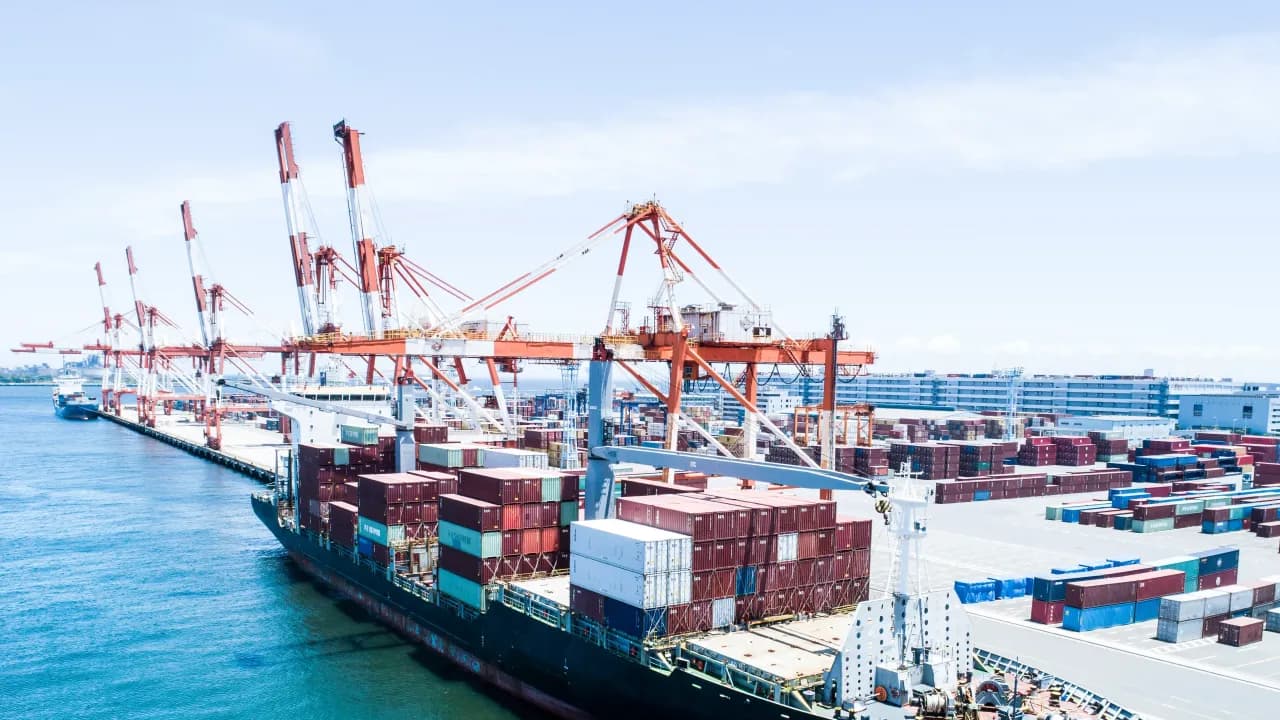Analysts warn that rising U.S. inflation and weaker consumer demand could further dampen import volumes, posing new risks for Asia’s growth.
U.S. President Donald Trump’s unpredictable tariff moves sent Asian exporters scrambling to get their goods into the U.S. ahead of schedule, with a rush known as “front-loading.”
The surge has been particularly notable in shipments from Taiwan, South Korea, and Japan, according to a Nikkei report.
However, the early gain could be fizzling out, with analysts cautioning that import volumes in the U.S. may drop sharply in the coming months.
As tariff rates are edging closer to being set in stone, mounting inflation and softening demand in the U.S. are becoming a more acute concern for retail stockpiling, raising new risks for Asia’s export-reliant nations.
Chris Rogers of S&P Global noted that rising prices could limit the Fed’s rate cuts, further pressuring consumer spending.
In July, U.S. ports saw a 2.1% year-on-year rise in container volumes, but the National Retail Federation expects double-digit declines from August, reaching the lowest levels since April 2023 by November.
Shipping costs echo the downtrend, with spot rates from Shanghai to LA plunging 55% between mid-June and end-July.
Alex Holmes of the Economist Intelligence Unit expects front-loading to unwind fully, forecasting export contractions across Asia. Malaysia, for example, could see a 6% drop in the second half of 2025 and a 20% slump in the first half of 2026.
Despite the looming export dip, Asian equity markets remain upbeat. South Korea’s KOSPI is up 24% since April, with gains in Vietnam, Taiwan, and China as well. But BNP Paribas strategist Chi Lo cautioned that market optimism may be misplaced.
If exports begin to slump, the impact could ripple through Asia’s investment and labor markets, said Alex Holmes, Regional Director for Asia Pacific at The Economist Intelligence Unit. He noted that central banks in the region haven’t moved aggressively to cut rates and “have a bit of catching up to do.”
Frederic Neumann, chief Asia economist at HSBC, said the expected front-loading ahead of U.S. tariffs may have been overstated, noting that limited inventory buildup has occurred outside of sectors such as electronics and pharmaceuticals. He said that strong U.S. consumer demand could help prevent a sharp drop in Asian exports.
On Stocktwits, retail sentiment for the SPDR S&P 500 ETF Trust (SPY), Invesco QQQ Trust (QQQ), and iShares Asia 50 ETF (AIA) was ‘neutral’. Message volume was ‘high’ for SPY and QQQ, but ‘low’ for AIA.
In contrast, sentiment for the SPDR Dow Jones Industrial Average ETF Trust (DIA) was ‘extremely bullish’ amid ‘high’ message volume.
So far this year, AIA has significantly outperformed the others with a 21.6% gain, compared to an 8.6% rise in QQQ, 6.3% in SPY, and 2.8% in DIA.
For updates and corrections, email newsroom[at]stocktwits[dot]com.<
